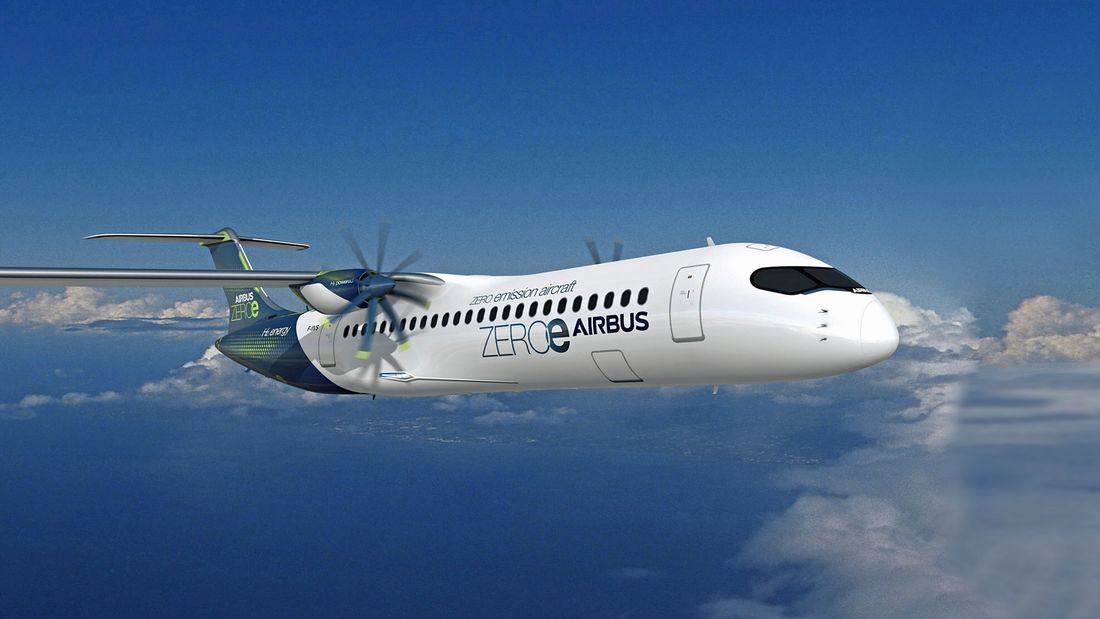Airbus is advancing the development of a hydrogen aircraft by 2035. According to a media report, the manufacturer’s current plans are for a short-haul turboprop. Airbus wants to commit to a concept by 2025 at the latest.
The problem with hydrogen
The problem with hydrogen, is that you ought to store it at high pressure. Therefore, its transport and distribution are expensive. Even the hydrogen tank is very heavy, it takes about a weight which is four times the amount of hydrogen that can hold. This type of problem seems insurmountable for cars, whereas for airplanes, which can concentrate the refueling points in airports, investing in the necessary infrastructure seems more affordable. The production of hydrogen could be concentrated in airports thanks to renewable energy installations, wind turbines or photovoltaic panels.
Hydrogen-powered airliner
100 passengers, 1,000 nautical miles range: Airbus will take a turbo-prop to develop a hydrogen-powered airliner. The news agency “Bloomberg” reports, citing insiders. The turboprop approach presents the developers with comparatively lower technical hurdles compared to turbofan and blended wing concepts, but it will appeal to a smaller market. In September 2020, Airbus proposed three designs for an aircraft with fuel cells.
Decision in the middle of the decade
“All studies are making good progress,” said an Airbus spokeswoman for “Bloomberg”. Before 2024 or 2025, Airbus will not define a concept. Airbus has set the turbofan design with 120 to 200 passengers and a range of 3,700 kilometers slightly below the A320neo, said Airbus technology director Grazia Vittadini last September. The aircraft would reach the same flight speed with a good 800 km / h.
Modular turboprop
The hydrogen turboprop for 100 passengers would be around a hundred kilometers per hour faster than current turboprops at 600 km / h. Both designs are powered by gas turbines that are supplemented by a hybrid electric motor with hydrogen fuel cells – a deliberately conventional approach. At the end of 2020, Airbus had added an alternative turboprop design with replaceable drive modules. The concept envisages an aircraft with six “pods” in which an electric motor drives a propeller. The self-contained drive modules have their own hydrogen tank and a fuel cell.




